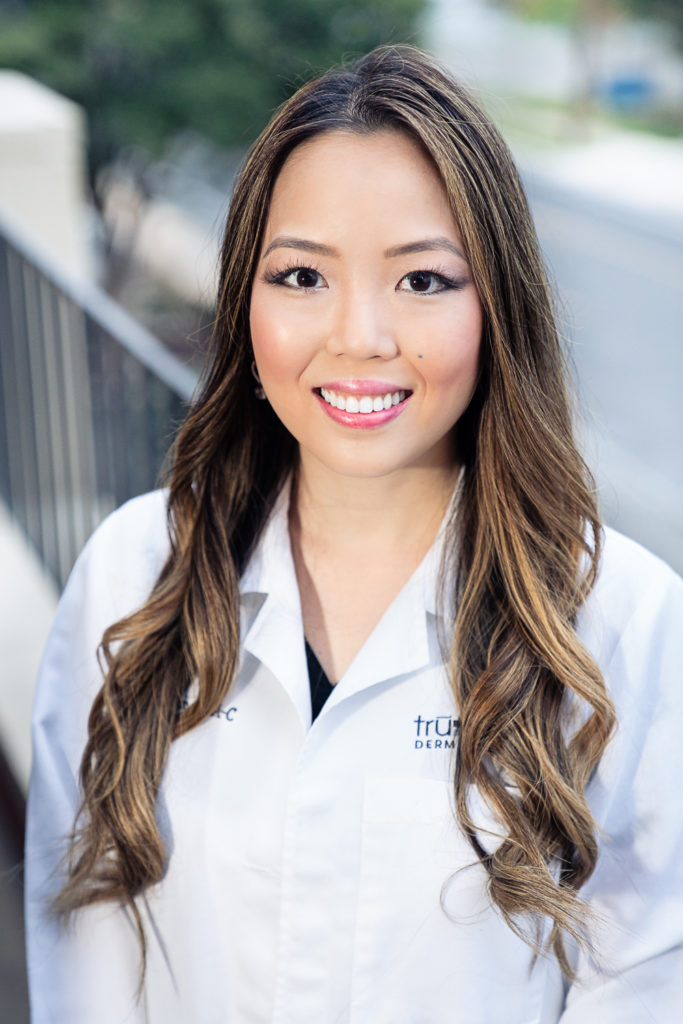Sponsored Content brought to you by Tru-Skin

There are more cases of skin cancer each year than all other cancers combined. Most moles never become life-threatening, but some can turn into melanoma, the most dangerous and deadliest form of skin cancer. Melanoma is the number one most diagnosed cancer amongst 25- to 29-year-old adults. Check your own moles at home every one to three months and mention any moles of concern to your provider during your visit. Scan your entire body for moles that are asymmetrical, appear larger, discolored, have jagged irregular borders or changing. Have someone you trust help check areas you can’t inspect yourself, such as your back or scalp.
What does Tru-Skin look for during a mole-check appointment?
- A full-body skin check usually takes 10 minutes, longer if we see any moles that look unusual using a dermatoscope tool. We check for the “ABCs” of each mole.
- Asymmetry: Not the same shape on both sides
- Border irregularity: Jagged or blurred edges
- Color: multi-colored with various shades of tan, brown, black, red or clear
- Diameter: larger than ¼ of an inch
- Evolving: Changing over time
- We also check for pre-cancerous actinic keratoses caused by sun damage, along with other skin cancers such as basal cell and squamous cell carcinoma.
How often should patients schedule these?
- Skin checks by a dermatology expert should at least be performed annually.
- There is no set age to start routine skin checks or how often they should occur.
- Risk factors such as any history of sunburn, indoor tanning, outdoor tanning or living in a sunny environment increase your chances of having skin cancer. Inherited risk factors include a family history of skin cancer, fair complexion, blue or green eyes, red or blonde hair and having more than 50 moles. The more risk factors you have the more frequently you should be screened.
Why are mole checks important?
- Everyone needs a skin check, both at home and with a dermatology specialist. Early detection saves lives. Skin cancer is mostly preventable and usually curable if caught early. If neglected, it may cause severe disfigurement, functional impairment and death.
- Everybody deserves the education of knowing what to look for and why.
What should a patient expect?
- As the name entails, a full-body skin check is an examination of your skin from head to toe. You’ll take off all of your clothes, put on a medical exam gown and a medical assistant will be present. We will most likely ask if you have any moles or lesions that concern you.
- We make note of any lesions that need monitoring or testing. We check your scalp, face, lips, hands, feet, trunk, buttocks and extremities to less visible areas like the eyelids, ears, fingers, in-between toes and nails.
- I personally do not examine the genitalia unless a patient requests it or has areas of concern. If you notice any unusual lesions there, mention it. It’s better to be safe than sorry.
- If a suspicious mole is found, we perform a quick, simple, relatively pain-free shave biopsy or removal.
- Local anesthetic is administered to numb your skin; then we shave a sampling of the area to send to the lab for testing.
What ages are these recommended?
- There is no set age to start routine skin checks or how often they should occur. However, if you have multiple risk factors, you should start early. Everybody should get a “baseline” skin check in their 20s.
- I’ve diagnosed teenagers with melanoma and have had plenty with scary-looking moles. It’s never too early or too late to visit a dermatology specialist.
Tru-Skin Dermatology is proud to offer free skin cancer screenings for patients without insurance throughout the year at our various locations. Call to schedule your appointment today at 512.451.0139.


